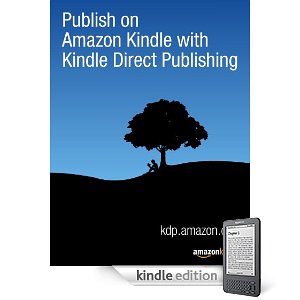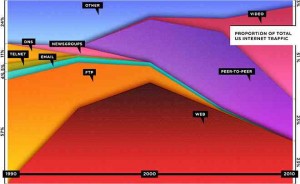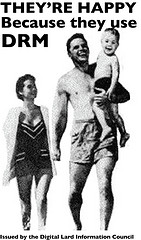 One of the ongoing stories about culture over the past decade has been the rise of niches. Mass culture has broken down and atomized as the digital revolution made niche interests more viable. As people had access to more choice, more of them stopped going for generic mass culture served through limited channels.
One of the ongoing stories about culture over the past decade has been the rise of niches. Mass culture has broken down and atomized as the digital revolution made niche interests more viable. As people had access to more choice, more of them stopped going for generic mass culture served through limited channels.
Audiences for the traditional television, radio, movies, music newspaper and magazine industries declined precipitously. It’s been reasonable to think perhaps that the kinds of mass audiences television used to gather would not be seen again. And the music industry? A few weeks ago the No. 1-selling recording on the Billboard charts sold only 40,000 copies, a record low.
But there’s a new mass culture emerging, and it dwarfs the audience that TV used to command. It’s the kind where Justin Bieber can get 500 million views on YouTube for a single video, Lady Gaga can get one billion views for her videos and Charlie Sheen can get three million Twitter followers in under a week.  You don’t have to be famous to get an audience. A stupid farting baby video has more than 150 million views. Matt Harding has had 34 million views for his goofy dancing.
And it can be profitable too. Thirteen-year-old Rebecca Black got almost 50 million views after YouTube critics called her video the “most appalling thing on the internet.” Forbes says she’s a millionaire from all the interest from her video.
Then there’s Amanda Hocking, a 26-year old, who’s making millions publishing her own books online:
She gets to keep 70% of her book sales — and she sells around 100,000 copies per month. By comparison, it’s usually thought that it takes a few tens of thousands of copies sold in the first week to be a New York Times bestselling writer.
The comparison isn’t entirely fair, because Hocking sells her books for $3, and some $.99. But that’s the point: by lowering the prices, she can make more on volume, especially impulse buys. Meanwhile e-books cost nothing to print, you don’t have to worry about print volumes, shelf space, inventory, etc. And did we mention the writer keeps 70%?
There are thousands of these stories now.
Everyone seems to be complaining about information overload these days. Content is expanding at a faster and faster rate. And the nature of that content is shifting. Seventy percent of all the content made on the web this year will be made not by “professionals” but by internet users. There were 250,000 books published by traditional publishers last year. But there were 750,000 sel-published books. Traditional gatekeepers seem to have fled the building.
It’s hard not to be overwhelmed by the choice. So the key to surviving the overload is finding trusted people or websites or services that  sort through the masses and deliver what we’re looking for. It’s the rise of the curator, who are like human search engines who better deliver the information we want.
I get more and more of my news from Twitter; I follow people who are interested in things I’m interested in and are sharing what they find. I don’t have time to closely follow all the things I’m interested in, so I depend on the 100+ people I follow to monitor and point me where I need to be. It’s like having an army of curator/editors working for me. In return, I point people to the things I find on ArtsJournal and elsewhere.
Maybe this is harder to navigate than when there were only a few news options, but put in a little work, and it’s possible to be much more informed about more things than it was in the “good old days.” And it means that if you have something to say it’s possible to be part of the conversation and find an audience.


